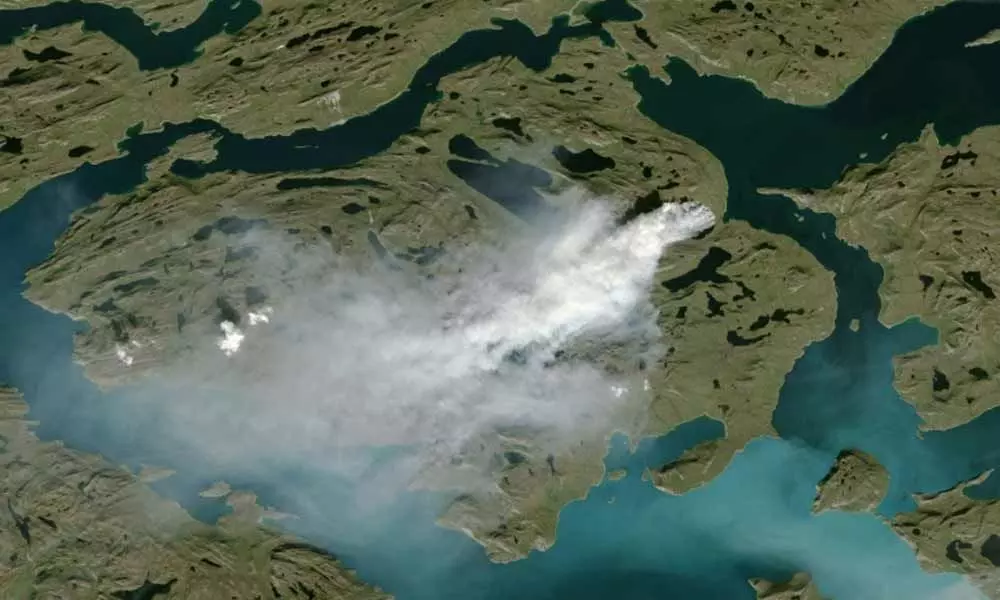Warmest May on record, Siberia 10C hotter
 The risk of wildfires increases with warm, dry conditions
The risk of wildfires increases with warm, dry conditionsTemperatures soared 10 degrees Celsius above average last month in Siberia, home to much of Earth's permafrost, as the world experienced its warmest May on record, the European Union's climate monitoring network said Friday.
Temperatures soared 10 degrees Celsius above average last month in Siberia, home to much of Earth's permafrost, as the world experienced its warmest May on record, the European Union's climate monitoring network said Friday.
Large swathes of Siberia have been unusually warm for several months running, the Copernicus Climate Change Service (C3S) reported.
"The really large anomalies started during January, and since then this signal has been quite persistent," C3S senior scientist Freja Vamborg told AFP.
Temperatures reached close to 10C above the 1981-to-2010 average over parts of the Ob and Yenisei rivers, which have seen the record-early break-up of ice, C3S said in a statement.
The collapse of a reservoir some 800 kilometres (500 miles) further north last week -- leading to 21,000 tonnes of diesel fuel polluting a river near the Arctic city of Norilsk -- has been linked by Russian officials to melting permafrost.
Globally, Earth's average surface temperature for the 12 months to May 2020 is close to 1.3C above preindustrial levels, the benchmark by which global warming is often measured, according to the new data.
Under the 2015 Paris Agreement, nearly 200 countries have pledged to cap the rise in Earth average surface temperature to "well below" 2C, and to 1.5C if possible.
The heatwave across parts of Siberia and Alaska will cause particular alarm in regions that were engulfed by huge forest fires last year fuelled by record heat, and where Copernicus has warned that "zombie" blazes smouldering underground may be reigniting.
Globally, May was 0.63C warmer than the average May from 1981 to 2010, with above-average temperatures across parts of Alaska, Europe, North America, South America, Africa and Antarctica.
- Arctic infrastructure at risk -
Some regions in Europe -- from the Balkans to Scandinavia -- saw cooler than average temperatures in May, as did Australia, southern Asia and the eastern United States.
Overall, global temperatures have risen more than one degree Celsius since mid-19th century levels, driven mostly by burning fossil fuels.
The last five years have been the hottest on record, as has been the last decade.
In the Arctic as a whole, average temperatures have risen by more than two degrees Celsius since the mid-19th century, twice the global average.
The softening of once-solid permafrost -- which stretches across Siberia, Alaska and northern Canada -- has upended indigenous communities and threatens industrial infrastructure, especially in Russia.
"Widespread permafrost thaw is projected for this century," the UN's climate science panel, the IPCC, said in a landmark report last year on the world's cryosphere, or frozen zones.
"The majority of Arctic infrastructure is located in regions where permafrost thaw is projected to intensify by mid-century."
The warming Arctic has also accelerated melting of Greenland's kilometres-thick ice sheet, resulting in a net loss of 600 billion tonnes of ice mass for the year -- accounting for about 40 per cent of total sea-level rise in 2019.
The permafrost in Russian and Canadian forests contains as much as 1.5 trillion tonnes of carbon dioxide -- around 40 times current annual emissions.
The United Nations said last year that manmade greenhouse gas emissions needed to tumble 7.6 per cent annually over the next decade to cap global warming at 1.5C.
Current pledges to cut emissions put Earth on a path of several degrees warming by the end of the century.



















